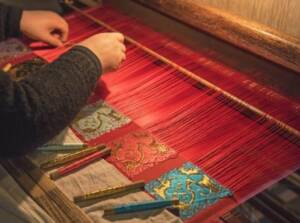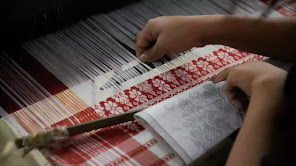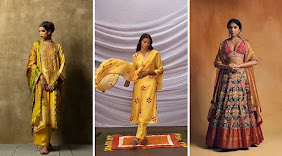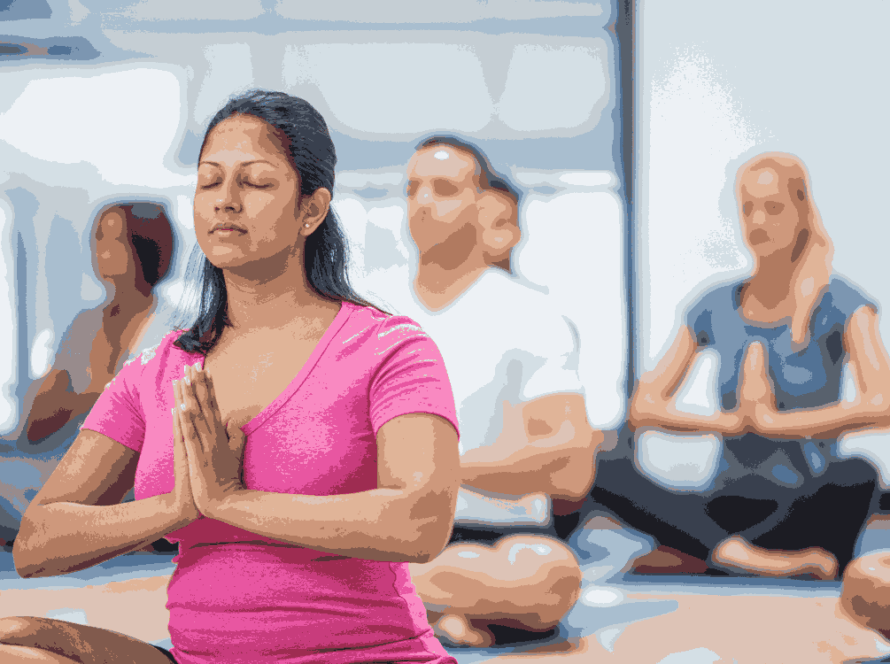Reviving Handloom Fashion in India: Preserving Heritage and Promoting Sustainability
Handloom fashion, an integral part of India’s rich cultural heritage, is experiencing a renaissance in contemporary times. Known for its intricate craftsmanship, vibrant colors, and unique textures, handloom fabric represents the art of weaving that has been passed down through generations. As the fashion industry becomes increasingly aware of sustainability and the need for cultural preservation, the revival of handloom fashion is not just a trend but a movement to celebrate and sustain India’s traditional weaving techniques. This blog explores the revival of traditional weaving fashion in India, highlighting its significance, challenges, and the path forward for this cherished art form.
RX REJUVENATE, THE BEST SKINCARE CLINIC LOCATED IN NORTH DELHI IS ONE OF THE GREAT SUPPORTER AND FOLLOWER OF ADVANCEMENT IN FASHION HANDLOOM WHICH LEADS THE PATHWAY TO NATION’S EMPOWERMENT AND ENCOURAGING US TO DELIVER MORE EFFICIENT AND TARGETED RESULTS TO OUR CLIENTS.
The Significance of Handloom Fashion
- Cultural Heritage:Handloom weaving is deeply rooted in India’s cultural and historical legacy. Each region has its distinctive weaving traditions, such as the Banarasi silk from Varanasi, the Kanjivaram silk from Tamil Nadu, and the Chanderi fabric from Madhya Pradesh. These fabrics are not just garments but a representation of local craftsmanship, traditions, and stories.
- Example: The intricate zari work of Banarasi sarees, with its elaborate patterns and gold thread embroidery, showcases the rich cultural heritage of Varanasi and has been a symbol of grandeur in Indian weddings and celebrations.
- Sustainability and Eco-Friendliness:Handloom fashion stands out for its minimal environmental impact compared to machine-made textiles. The process is energy-efficient and uses natural fibers and dyes, contributing to sustainable fashion practices. By promoting traditional weaving fabrics, there is a significant reduction in carbon footprint and waste.
- Example: Handloom fabrics like organic cotton and bamboo textiles are produced with less water and chemicals, making them an eco-friendly alternative to synthetic materials.
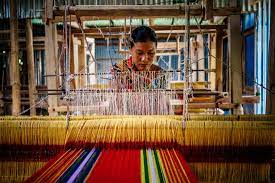 The Revival Movement
The Revival Movement
- Government Initiatives and Support:Recognizing the importance of traditional weaving fashion, the Indian government has introduced various schemes to promote and support handloom weavers. Programs such as the “Handloom Mark” initiative aim to certify and promote genuine handloom products, while schemes like “Weavers’ Welfare Fund” provide financial assistance and support to weavers.
- Example: The Ministry of Textiles’ “National Handloom Development Programme” aims to enhance the productivity and quality of traditional weaving products through training, infrastructure development, and market linkages.
- Emergence of Contemporary Designers:Contemporary fashion designers are playing a crucial role in reviving and modernizing traditional weaving fashion. By integrating traditional handloom fabrics into contemporary designs, these designers are bridging the gap between tradition and modernity. Their innovative approach is making handloom fashion more relevant to today’s consumers.
- Example: Designers like Sabyasachi Mukherjee and Anita Dongre have successfully incorporated traditional traditional weaving fabrics into their high-fashion collections, bringing attention and appreciation to these timeless materials.
- Increased Consumer Awareness:There is a growing consumer awareness regarding the value of traditional weaving fashion. As people become more conscious of sustainability and ethical fashion, traditional weaving fabrics are gaining popularity for their uniqueness and environmental benefits. This shift in consumer preferences is driving demand for traditional weaving products and supporting the revival of traditional weaving techniques.
- Example: Online platforms and social media campaigns highlight the stories of weavers and the craftsmanship behind traditional weaving products, educating consumers and fostering a deeper appreciation for these fabrics.
Challenges in the Revival of Handloom Fashion
- Competition with Mass-Produced Textiles:Handloom products often face stiff competition from machine-made textiles, which are cheaper and produced in large quantities. The lower cost and mass availability of synthetic fabrics pose a significant challenge to the marketability of traditional weaving products.
- Solution: Emphasizing the unique value of traditional weaving fabrics, such as their craftsmanship and cultural significance, can help differentiate them from mass-produced alternatives.
- Lack of Modern Infrastructure:Many traditional weaving weavers operate with outdated equipment and lack access to modern technology. This affects the quality and efficiency of production, making it difficult for weavers to compete in the modern market.
- Solution: Investment in modern weaving tools and technology, along with training and skill development programs, can enhance the productivity and quality of traditional weaving products.
- Market Accessibility and Pricing:Handloom products are often priced higher than mass-produced textiles due to the intricate craftsmanship and labor involved. Additionally, limited market access can hinder the visibility and reach of handloom products.
- Solution: Expanding market access through online platforms, collaborations with designers, and participation in fashion events can increase visibility and sales of traditional weaving products.
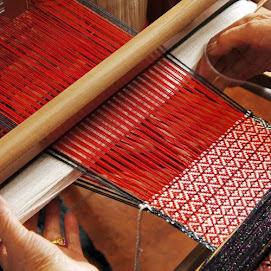 The Path Forward
The Path Forward
- Promoting Handloom Education and Training:Investing in education and training programs for weavers can ensure the preservation of traditional techniques and the development of new skills. By enhancing the capabilities of traditional weaving artisans, the industry can produce high-quality products that appeal to modern consumers.
- Strengthening Market Linkages:Building strong market linkages through collaborations with fashion designers, retailers, and e-commerce platforms can improve the reach and accessibility of traditional weaving products. Creating exclusive collections and participating in fashion shows can also boost the visibility of traditional weaving fashion.
- Encouraging Sustainable Practices:Emphasizing the sustainability and eco-friendliness of traditional weaving fashion can attract environmentally conscious consumers. Supporting initiatives that promote sustainable practices and ethical production can further enhance the appeal of traditional weaving products.
Conclusion: Weaving the Future
The revival of traditional weaving fashion in India represents a harmonious blend of tradition and modernity. By celebrating the cultural heritage of traditional weaving textiles, supporting the artisans, and promoting sustainable practices, India can preserve its rich weaving traditions while addressing contemporary fashion needs. The growing appreciation for traditional weaving products reflects a broader movement towards valuing craftsmanship, sustainability, and cultural heritage. As the fashion industry continues to evolve, the revival of traditional weaving fashion will play a vital role in shaping the future of Indian fashion, ensuring that this timeless art form remains a cherished part of the country’s heritage.
